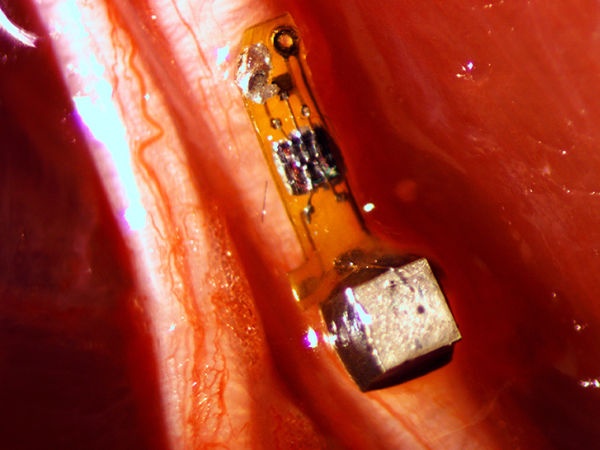Crédits:
University of California, Berkeley engineers have built the first dust-sized, wireless sensors that can be implanted in the body, bringing closer the day when a Fitbit-like device could monitor internal nerves, muscles or organs in real time.
For full story, visit: http://news.berkeley.edu/2016/08/03/s...
Video by Roxanne Makasdjian and Stephen McNally
The so-called neural dust, which the team implanted in the muscles and peripheral nerves of rats, is unique in that ultrasound is used both to power and read out the measurements. Ultrasound technology is already well-developed for hospital use, and ultrasound vibrations can penetrate nearly anywhere in the body, unlike radio waves, the researchers say.
“I think the long-term prospects for neural dust are not only within nerves and the brain, but much broader,“ said Michel Maharbiz, an associate professor of electrical engineering and computer sciences and one of the study’s two main authors. “Having access to in-body telemetry has never been possible because there has been no way to put something supertiny superdeep. But now I can take a speck of nothing and park it next to a nerve or organ, your GI tract or a muscle, and read out the data.“
The sensors, which the researchers have already shrunk to a 1 millimeter cube – about the size of a large grain of sand – contain a piezoelectric crystal that converts ultrasound vibrations from outside the body into electricity to power a tiny, on-board transistor that is in contact with a nerve or muscle fiber. A voltage spike in the fiber alters the circuit and the vibration of the crystal, which changes the echo detected by the ultrasound receiver, typically the same device that generates the vibrations. The slight change, called backscatter, allows them to determine the voltage.
Because these batteryless sensors could also be used to stimulate nerves and muscles, the technology also opens the door to “electroceuticals” to treat disorders such as epilepsy or to stimulate the immune system or tamp down inflammation.
Additional footage provided by:
The Johns Hopkins University Applied Physics Laboratory
UPMC/Pitt Health Sciences from One Giant Bite: Woman with Quadriplegia Feeds Herself Chocolate Using Mind-Controlled Robot Arm
https://www.youtube.com/watch?v=76lIQ...
Additional graphics provided by: DJ Seo
Music: Far Away by MK2
http://www.news.berkeley.edu/
http://www.facebook.com/UCBerkeley
http://twitter.com/UCBerkeley
http://instagram.com/ucberkeleyofficial
https://plus.google.com/+berkeley
